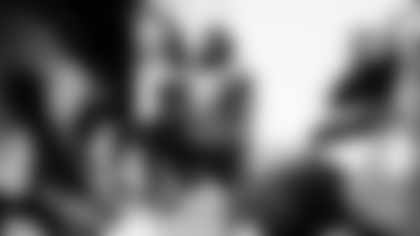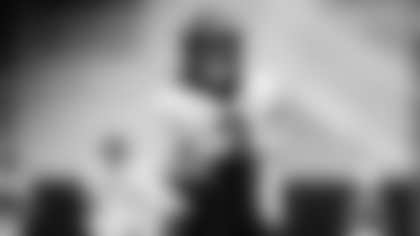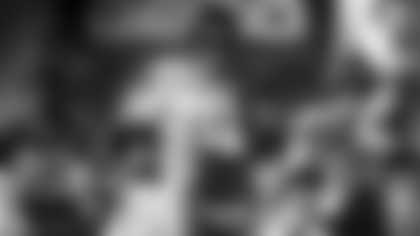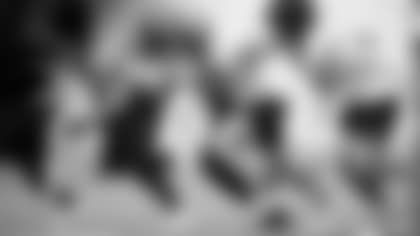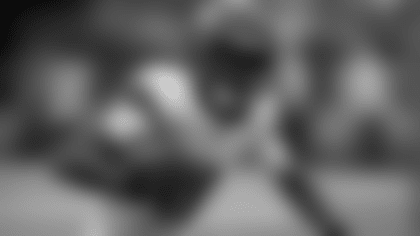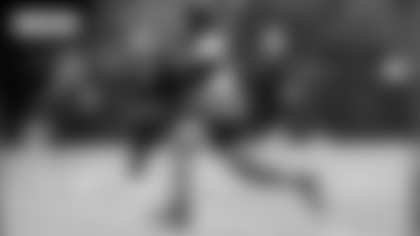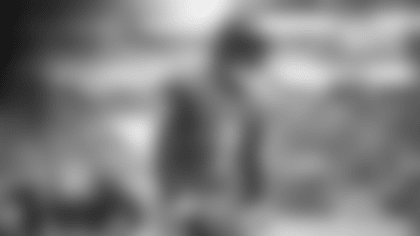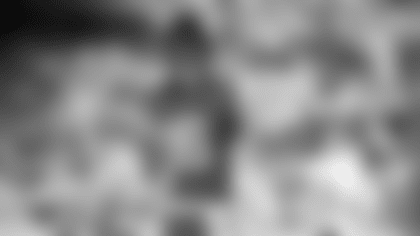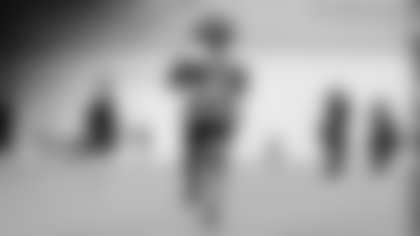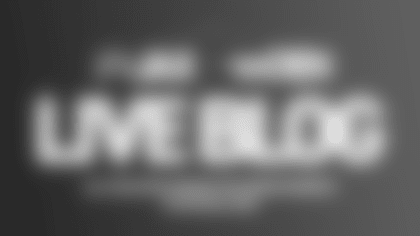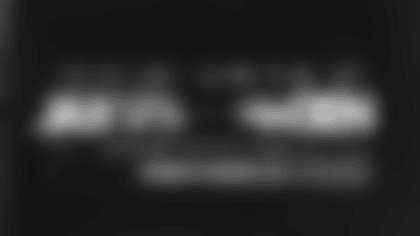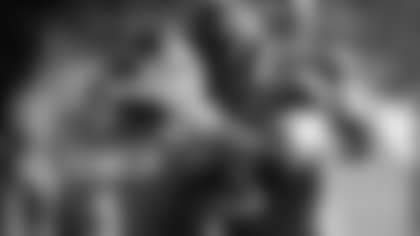Join jaguars.com senior editor Vic Ketchman as he tackles the fans' tough questions.
George from Jacksonville:
I'm going out of town and I really want to know if there's a radio station that'll be covering the draft?
Vic: Brian, Jeff and I will be offering coverage from noon until 3 p.m. on Saturday on WOKV, and the show may be heard live on jaguars.com.
Jose from Costa Mesa, CA:
How many yards did Fred Taylor get in the second half of last season?
Vic: Fred Taylor rushed for 989 yards on 199 carries in the second half of last season. He rushed for 583 yards on 146 carries in the first half of the season.
John from Jacksonville:
On the second day of the draft, teams are looking for "diamonds in the rough." Who are some of the better players taken on the second day of the draft in recent years?
Vic: Last year, Domanick Davis (Houston) and Steve Sciullo (Indianapolis) were selected in the fourth round and New England picked Tully Banta-Cain in the seventh round. In 2002, David Thornton (Indianapolis), Randy McMichael (Miami) and Najeh Davenport (Green Bay) were fourth-round picks. The 2001 draft offered Rudi Johnson (Cincinnati), Edgerton Hartwell (Baltimore) and a lot of other fourth-round picks who are currently role players, the fifth round produced Marques Sullivan (Buffalo) and A.J. Feeley (Philadelphia), and the seventh round gave the Jaguars Marlon McCree. If there's one conclusion to draw from studying the second-day draft list, it's that there aren't a lot of "diamonds."
John from Ponte Vedra Beach, FL:
While all of the media and fan attention is devoted to the first-round pick, for a team to have continued success the second and third-round picks are equally, if not more, important. Looking back at the Coughlin era, I would rate his second and third-round picks as below average, if not poor, because only four out of the 19 second and third-round picks are still on the roster. Do you agree?
Vic: What you're talking about are first-day picks. Yes, a team has to draft well on the first day to be successful. The strength of Tom Coughlin's drafts was his first-round picks. He only made one bad one, R.J. Soward, and he was the 29th pick of that draft, which means he was only three picks away from being a second-rounder. Coughlin's batting average fell off dramatically in the second and third rounds, and that ultimately is what caused the Jaguars to have to turn so hard to free agency. Tony Brackens, Michael Cheever, Brad Meester, Maurice Williams and Mike Pearson are second-round picks who became starters; Cheever, in my opinion, would've been a star, had it not been for the back injury that ended his career. But the Jaguars got next to nothing out of Cordell Taylor and Larry Smith, and not enough out of Brian DeMarco, Bryan Schwartz and Mike Logan. In the third round, Aaron Beasley and Akin Ayodele are the only satisfying picks. Chris Hudson's performance never equaled what should be expected of the 71st pick of the draft, T.J. Slaughter fell short of expectations, and James Hamilton, Jonathan Quinn, Anthony Cesario, Eric Westmoreland and James Boyd were bitter disappointments.
Holger from Bad Vilbel, Germany:
We held a mock draft on a German message board and I was the GM of the Jaguars. Here's what I did: Larry Fitzgerald somehow slipped past the Lions and I gave the Browns one of our third-round picks and selected Larry Fitzgerald at number seven overall. In the second round, I went BAP and took Karlos Dansby. I stuck to the BAP in the third round and that was another LB, Michael Boulware. Again, BAP in the fourth round for the Jaguars; RB Greg Jones. I failed to address the need at defensive end, drafted two OLB and a RB we don't really need, but I brought in four major talents. Is this what you want to get from the BAP theory?
Vic: Why is this so difficult to understand? The best available player is the highest-rated guy on your board, regardless of position. Holger, if you had a board and those guys were at the top of it when you picked them, you did BAP. If they weren't, you didn't. It's that simple. By the way, you stole your countrymen blind. All of those guys you drafted will be drafted ahead of the spots at which you selected them. I can't imagine any of those guys weren't the best available players when you drafted them.
Randy from Orange Park, FL:
How do you figure the best available player? It seems to me that comparing wide receivers to linebackers is like comparing apples to oranges, as different skills are required for different positions. Am I missing something here?
Vic: This is unbelievable. I'm starting to feel like a Chinese philosopher who has introduced some deeply spiritual philosophy that is the foundation of ying and yang. Randy, I'm not that smart. When I was a kid, we arranged pickup games by putting one hand over the other on a bat. The last hand to fill the space up to the knob got the first pick, and that kid always took the best player. And then the next best player, and the next best player until they got to me. And it worked. The games were usually competitive. In my opinion, the draft is no different. If you don't take the best player available, your opponent will, and that means you missed your turn. The draft is not a science. Wide receivers and linebackers are football players, just as infielders and outfielders are baseball players. You rate 'em, you pick 'em. You know who the best guys are. In my opinion, the draft is not much different than choosing sides in those pickup games. San Diego's hand is up against the knob and they have their choice of anyone they want. Why wouldn't they choose the best player available?


